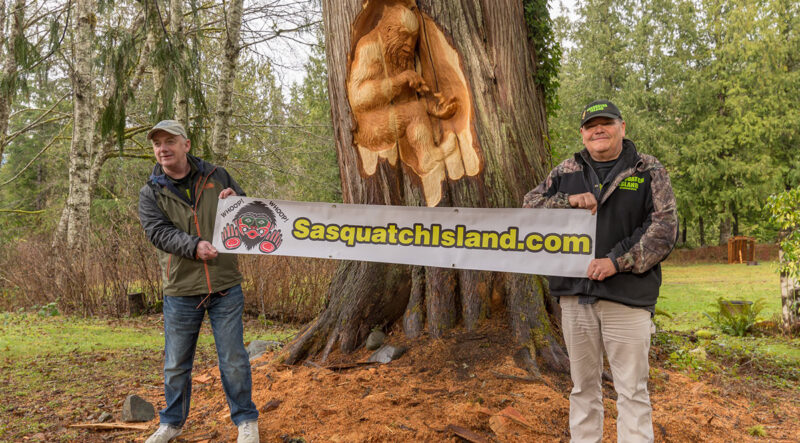North America is rich in diversity and has plenty of different perspectives when it comes to the inexplicable.
From First Nations to the introduction and emancipation of slaves, to the many waves of immigration, there are mythologies imported and shared across all ethnicities on the continent.
Even though there is diversity, the mainstream paranormal community often doesn’t reflect it.
The Superstitious Times took the opportunity to chat with individuals from different backgrounds to see how they approach the preternatural and if they’ve faced challenges during their investigations or pursuits. From an IT professional logging the bizarre happenings in his Seattle suburban home to a Kawakwaka’wakw Sasquatch investigator/bushman to a holistic spiritual counsellor of Gullah heritage, there are plenty of unique views.
Into the Woods
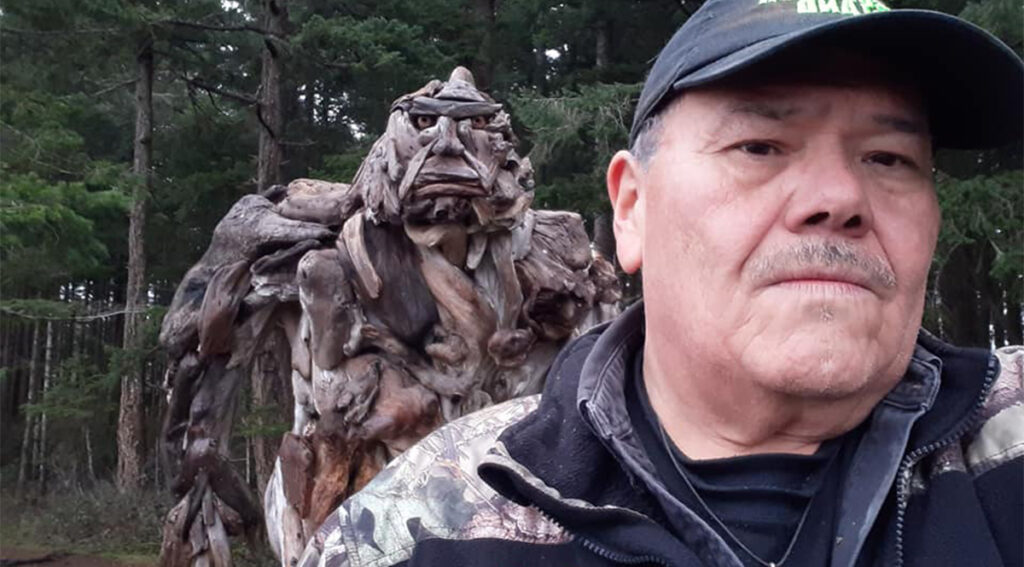
Thomas Sewid spent 26 years in the bush, surviving off the land and learning to co-exist with the Sasquatch.
It’s been a successful day on the Pacific Ocean for outdoorsman Thomas Sewid, as he takes a breather from trapping crabs off the Northwestern British Columbia coast.
The 55-year-old Kwakwaka’wakw First Nations is accustomed to living off the land as he called the bush home for 26 years. When he emerged in 2008, he shared his experiences with his partner Peggy Seaview.
A looming portion of those encounters includes seeing rare animals, like the white grizzly bears and Sasquatch.
“You spend enough time out in the bush, you’re going to see Sasquatch,” he shared during an early August phone conversation.
His dive into the cryptozoological community started with joining the Facebook group, Sasquatch Island, and the opportunity to be a group administrator presented itself.
“I started sharing everything on Sasquatch Island about my beliefs, encounters, perspectives and my bushman skills because I went rogue and disappeared, so I have an understanding of where they’re coming from and being an Indian all my life, I have a grasp of what we’ve been subjected to with contact and afterwards to present regarding our culture, our heritage and way of life.”
Another part of his experience includes the oral histories from the Kwakwaka’wakw, including the stories of Sasquatch visiting villages with smallpox victims.
In 1862, a person infected with smallpox arrived in Victoria aboard a steamship from San Francisco. That primary vector led to the disease spreading across Vancouver Island and devastating the Kwakwa̱ka̱’wakw, Tlingit, Heiltsuk, Haida, Tsimshian, Tŝilhqot’in, Coast Salish and Interior Salish nations.
According to the anecdotes, Sasquatch were also infected.
“Our family members, our chiefs, told our people to get our sick for the Sasquatch, that were standing at the edge of the woods, ‘Yes, we too are sick from this disease,’ and the Sasquatch just turned and disappeared into the forest,” Sewid recalled. “So, knowing the bush, I started to correlate that to the population growth, the demise of the indigenous peoples in North America and other places.”
His correlation includes a population increase, which is anchored in the increased sightings of Bigfoot during the 1960s, and the (in)famous Patterson-Gimlin video shot at California’s Bluff Creek in 1967.
Sewid’s wealth of knowledge about Sasquatch, right down to their diets of herring, shellfish, seaweed, limpets and bear-grass, has not gone without its xenophobic resistance from “anyone with a Confederate flag.”
“Humans are poo-tossing, bipedal apes and we’re the stupidest animal on this planet,” he said. “That being said, even with our own species, because of the different colour of our skin, or come from a different region, we have prejudiced and bigoted views in other humans. It’s poo-tossing instinct.”
He’s learned to deal with it, though. His bushman mindset is one that every animal fights one another, and will defend its territory. And Sasquatch are no different, he said.
There are four different social groupings, from Sewid’s observations: harvesters (juveniles, elderly, lame and females), hunters, scouts and the rogues. What it all boils down to is simple respect for the environment.
“They’re not going to harm you,” he said. “Always show them respect. Never, ever think of going or supporting someone who would go out and try to harm one.
“That’s not what we’re supposed to do. The indigenous teachings are to always show respect to the Sasquatch.”
The TV experience
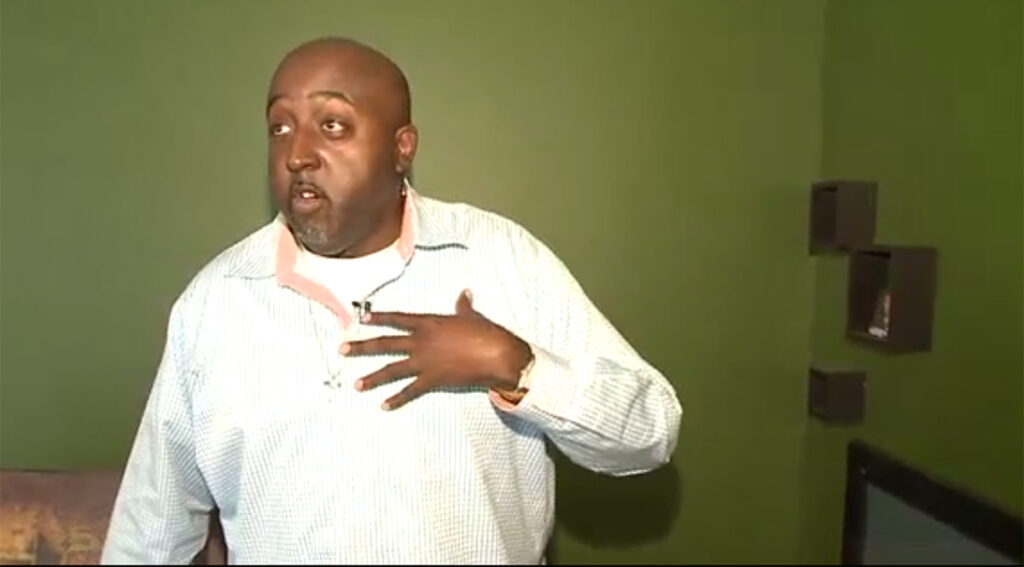
In 2015, Keith Linder reported strange occurrences happening in his rental home in Bothell, Wash. Eventually, the “Ghost Adventures” crew arrived to investigate.
Travel south along the Pacific coast from British Columbia to Bothell, Wash., a suburb of Seattle, and you’ll meet Keith Linder, an IT professional who allegedly experienced poltergeist activity in his home.
After bizarre instances of items being thrown, burning Bibles and strange oily markings on the walls in 2015, radio personality Dave Schrader reached out to Linder, and eventually brought the “Ghost Adventures” crew in to investigate.
The Travel Channel series covers the investigations of Zak Bagans and his team as they investigate America’s most well-known haunts. Occasionally they will travel to other countries, such as Scotland, Italy, Mexico and even Canada.
But the experience with the “Ghost Adventures” team left Linder, and his former girlfriend Tina Davis, feeling disconcerted.
“They would go off into their corner, and then we’d be off in the other corner, twiddling our thumbs wondering what to do,” Linder recalls. “Then when the cameras started rolling again, they’d be ‘Okays, here’s what we’re going to do …’
“There was no personalization, no ‘What do you do in your free time?’ Nothing like that, which I learned does help in investigations,” he adds. “It lets people let their hair down, to be at ease with you, and tell you things freely, versus being like, ‘I don’t know what else you want me to do’.”
It was an awkward, five-hour experience for all those involved, Linder said, and he admitted he suspects it was because the crew was not used to being around African Americans. Though, that vibe was not felt by Schrader.
During the episode, the team strayed from their usual investigative style and had a round table with Schraeder positing theories and laying the foundation that Tina was behind the fraud.
A segment of the episode had Bagans crossing paths with Davis and the look on her face caused the host to recoil.
“They even said her family was into voodoo or some ridiculous thing,” Hale recalled. “She just gave (Bagans) a look because it was dark and it was purely innocent.
“They didn’t have anything. So yeah, they’re going to blame Tina. They were just grasping for straws.”
Other paranormal investigators, such as Steve Mera of the Scientific Establishment of Parapsychology; Don Philips and Nick Kyle, the former lead for the Scottish Society for Psychical Research spent more time with Linder and confirmed the phenomenon.
Linder’s friend, Patty Hale, an educator in Everett, Wash. who is engaged to Don Philips, confirmed Linder’s home had bizarre happenings goings-on.
“It changed my perspective on life, going there,” she admitted. “It’s different to watch these things from afar; on TV or YouTube and be a part of it.
“It wasn’t scary or anything, but it proved to me that there’s another side,” Hale added. “There’s a veil there that’s very thin and it’s around us all the time.”
Although she admitted she’s not a paranormal investigator, Hale was on hand to witness the oily substance coming down from underneath the photos on the walls.
“I was with Keith when the guys had already gone back, and he called me saying, ‘I need you to come over right now,’” she recalled. “I watched that in real-time, so that was weird.”
Philips had discovered a portal within one of the rooms in the house. And Hale willingly stayed in the room for one night.
“I’ve never had sleep paralysis. I felt this oomph in my back. And I could not get my voice out,” she recalled. She could breathe, but she could not call out to Keith.
Hale suspected that something had entered her, and due to the portal being opened, the spirits were “bumping” into her.
Other instances of poltergeist activity included the wild movements of a chandelier, doors slamming, lights flickering and electronic voice phenomenon.
“There’s something there, but I had never seen the big stuff that had happened to (Keith) before,” she said.
Further research did reveal that the land was previously inhabited by the Sammamish people, who were displaced after the Puget Sound War in 1856. Irish settlers also arrived in the area.
Linder did log every encounter he experienced and said he was simply looking for an explanation of the events.
“If Keith would’ve been a white man, and some of the comments were nasty and upsetting, and why would the black community put themselves out there like that,” she said. “You don’t see a lot of Latinos either. It’s mostly white people you see in these shows.
“Keith’s been through hell.”
Linder kept track of all the inexplicable events that he experienced to get a better understanding of what was happening, scientifically speaking.
He admitted that he has passed along his data to other investigators, including EVPs and video. But in most cases, there is no response back.
“I don’t know where this data is going,” he said. “I’ve concluded after multiple times, after this book, is that whatever I’m giving them is challenging the status quo of what they think.
“I’m pretty sure if I had given a lot of my evidence to third parties, and it was fake in some way, ‘Aha! We got it,’” he added. “That would be blasted all over … That’s never happened.”
The conclusion, Linder posited, is it comes down to race.
Unfortunately, Davis and Linder broke up in 2015. She moved out and Keith would eventually leave the Bothell house in November 2016.
He wrote two books on the encounters in the house, The Bothell Hell House: Poltergeist of Washington State and Attachments: Poltergeist of Washington State Part 2, and was also the subject in Jenny Ashford and Steve Mera’s book House of Fire and Whispers: Investigating the Seattle Demon House.
Linder added that he continues to wonder about the experiences in his former home and asked why he has yet to receive answers from those researchers he shared his data with.
Uncovering the past
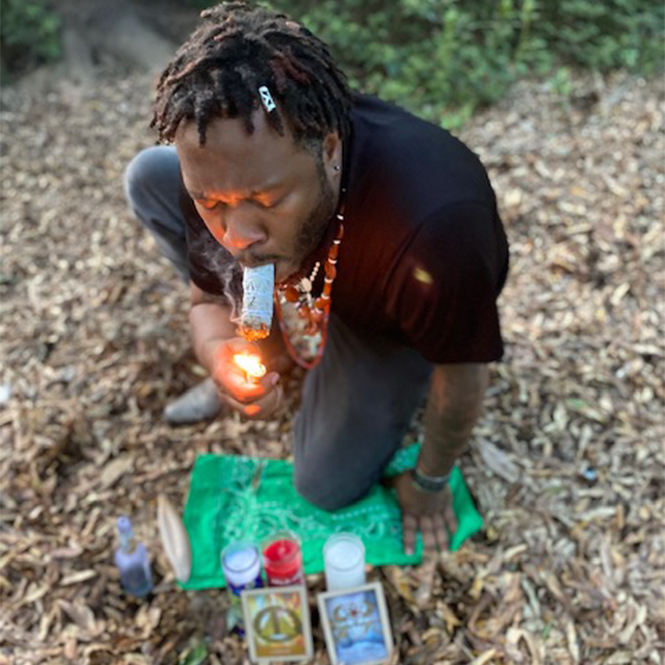
Although born in New York, Dedrick Hilton is
dedicated to his Gullah Geechee heritage. He is
working toward a Ph.D. in metaphysical science with a
focus on parapsychology.
Dedrick Hilton has been an on-again, off-again paranormal investigator in Columbia, South Carolina since 2005. He primarily works as a spiritual counsellor and provides home clearings, but is working toward a Ph.D. in metaphysical science with a focus on parapsychology
Originally born and raised in New York, the 40-year-old spent summers down in Statesboro, Georgia.
It’s part of his Gullah heritage. The Gullah are African Americans who call the Sea Islands from South Carolina to Florida home. They’ve been able to preserve their culture and creole dialect, which is similar to Bahamian Creole and Jamaican Patois.
“That’s a unique culture within the Black community in itself,” he said in an August Skype interview. “They have a whole bunch of core beliefs that to some might say superstition.
“We talked about the spiritual world, but we looked at it from a different perspective, even from other Black Americans.
However, Hilton said within the Georgian and South Carolinian communities of years gone by there was a sense of insecurity about the beliefs. The term Geechee was considered a derogatory term because of the accent they spoke in and their language.
When it comes to the paranormal, though, the Gullah Geechee don’t use equipment like EMF detectors, spirit boxes, dowsing rods or digital recorders. That’s because they are the equipment.
“Some people will say you were born with a veil over your eyes,” Hilton explained. “Also, in our culture, we’re very spiritual. It’s tied into the religion down here, like speaking in tongues to summon up spirits.”
These customs are used to relax the third eye and allow members of the community to see spirits. And those born with a veil can walk into a room and sense the auras and energy of a spirit.
Hilton, unfortunately, lost his father in 2005, and for him, he meditated, fasted and read from scripture.
“I can get in my car and feel, and see my father’s present right there,” he said. “And when I tell people that, like my girlfriend, I say, ‘Hey, my father is in the car here.’”
When he turned on the radio, his father’s favourite song was on the radio.
Discrimination within the community
On the topic of discrimination, Hilton has faced some resistance from even his community.
“Even white people in the Carolinas believe in the way I treat the paranormal,” Hilton admitted. “Now, I have faced discrimination, but not necessarily from the white people, but my own Black people.”
It goes back to the root work the Gullah did, which was something they were proud of. However, within the Black community, there is a sense of disdain.
“In our community, it was looked at as a backwoods Negro doing that, ‘We’ve evolved since then. We’re educated,’” he said, adding he was college-educated and worked as a teacher and in law enforcement.
There’s a sense that the paranormal television shows don’t represent the Black community. But for Hilton, that’s not necessarily a bad omen. Within the Gullah culture, there is a sense that playing around with the paranormal is taboo.
“That’s the majority of Black culture,” he said. “We can immerse society into this and make it seem like it’s from another diverse angle, but what type of diverse angle are you portraying?
“Pop culture has a strong influence.”
The most recent film adaptation about the life of Harriet Tubman, Harriet, depicted her as a conjurer, which is an instance of the paranormal. It’s rooted back into the Gullah Geechee community.
Even with the television series “Ghost Brothers”, which follows the investigations of Atlanta, Georgia’s Marcus Harvey, Juwan Mass and Dalen Spratt, there is a different perspective.
“In my world, we don’t necessarily look at ghosts as something bad,” Hilton said. “We see it that they’re sending us a message. They come to bring us something positive.”
Even his 11-year-old daughter saw her Aunt Trina sit down on the foot of her bed one afternoon. Hilton, curious by his daughter’s gift, asked his daughter what Aunt Trina had to say. The spirit smiled and told her everything was going to be okay.
When a deceased family member pays another a visit, it is seen as a harbinger of another older member’s death. Other beliefs include dream symbolism, where if a person dreams of fish, someone is going to “turn up pregnant” and if they dream of snakes, someone is going to harm them.
Still, Hilton admitted Atlanta is a different culture from the coastal areas when dealing with the paranormal.
But there is one common denominator throughout the continent, and that is the depiction of the hag. In Gullah culture, there is the belief that someone with so much animosity for another person will climb out of their body at night.
How to avoid the hag, which is common with sleep paralysis and in the culture of the Canadian Maritimes, is to lay down a broom by the door or leave the Bible open at the head of the bed. The former is so the hag counts every straw in the broom and the latter is so that the hag will count each letter in the Bible.
The hag is more on the malevolent side of the paranormal spectrum. Demons are common though within the Black community.
Hilton’s work is predominantly done in the rural areas of South Carolina. He’s able to relate to what he’s witnessing in the rural areas, as well as the capital, Columbia.
He also performs work for residents looking to clear their new homes. He has had plenty of calls, especially from the developments built atop the former grounds of the South Carolina Penitentiary, also known as the Central Correctional Institution (CCI), which was demolished in 1999.
Built in 1866, the institution was used to incarcerate slaves that had fled their masters.
“This prison was a freak of nature,” Hilton said, of its sheer size and tragic history of the building. “The residents are just young college kids and they don’t know about the prison.”
A wall from the prison guards’ post as well as a wooden bridge used to transport inmates still stands in the area.
“I’ve met with residents who tell me, ‘Hey, I hear weird noises in my apartment at night, like someone sharpening metal, people moaning’,” he said, adding they’ve seen inmates walk through their living rooms.
Hilton will look for the energy that’s causing the haunting in residents’ homes or even businesses within the former grounds of CCI and help to alleviate the frequency of the haunting.
Through all of his studies and work, he’s noticed a cultural shift even within the Gullah Geechee community. He’s noticed community members taking up Tarot and other forms of spiritual healing.
“When my mom found out what I was doing, she barked at me, and that was just recently,” he said. “She called me up, ‘Why you doing that? You’re too educated to be doing that?’”
Primarily, Hilton’s goal is to help people. And he broke that down when explaining his passion to the older generation.
Making connections
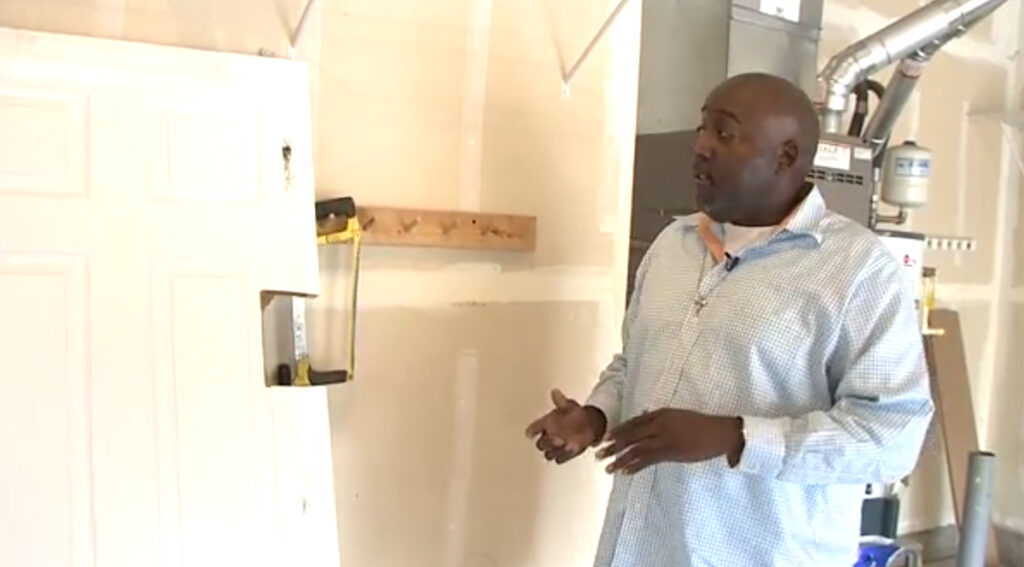
Keith Linder published two books, The Bothell Hell House: Poltergeist of Washington State and Attachments: Poltergeist of Washington State Part 2, detailing his experiences at the Bothell house.
Hilton’s observations about the acceptance of some formerly taboo practices underscore the fact that beliefs are not static.
Linder’s experience with outside views may have left him feeling isolated, but it did not deter him from investigating his experiences further.
And for Sewid, his emergence from his self-isolation in the bush has allowed him to share his experiences about one of North America’s greatest mysteries: the Sasquatch.
Their unique experiences are very much part of the paranormal world. Without them, there may not be any insight into how pockets of Canada and America process paranormal experiences.

